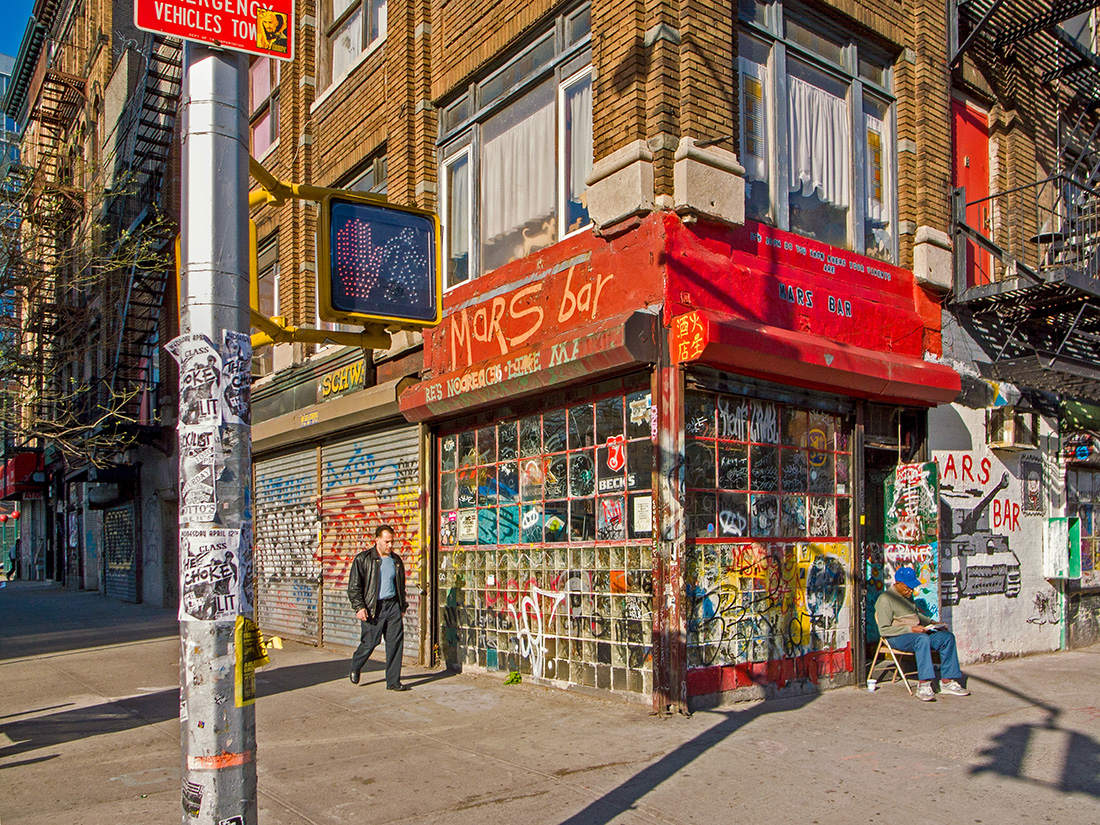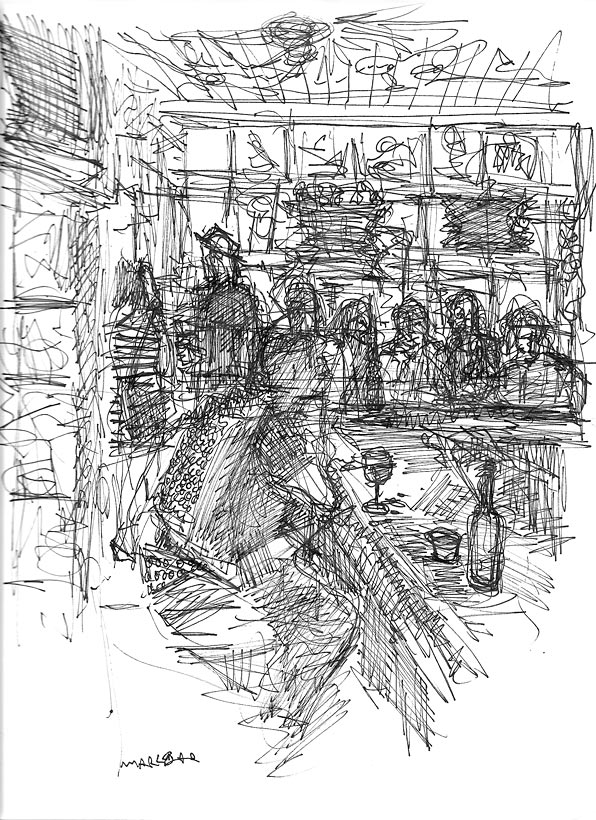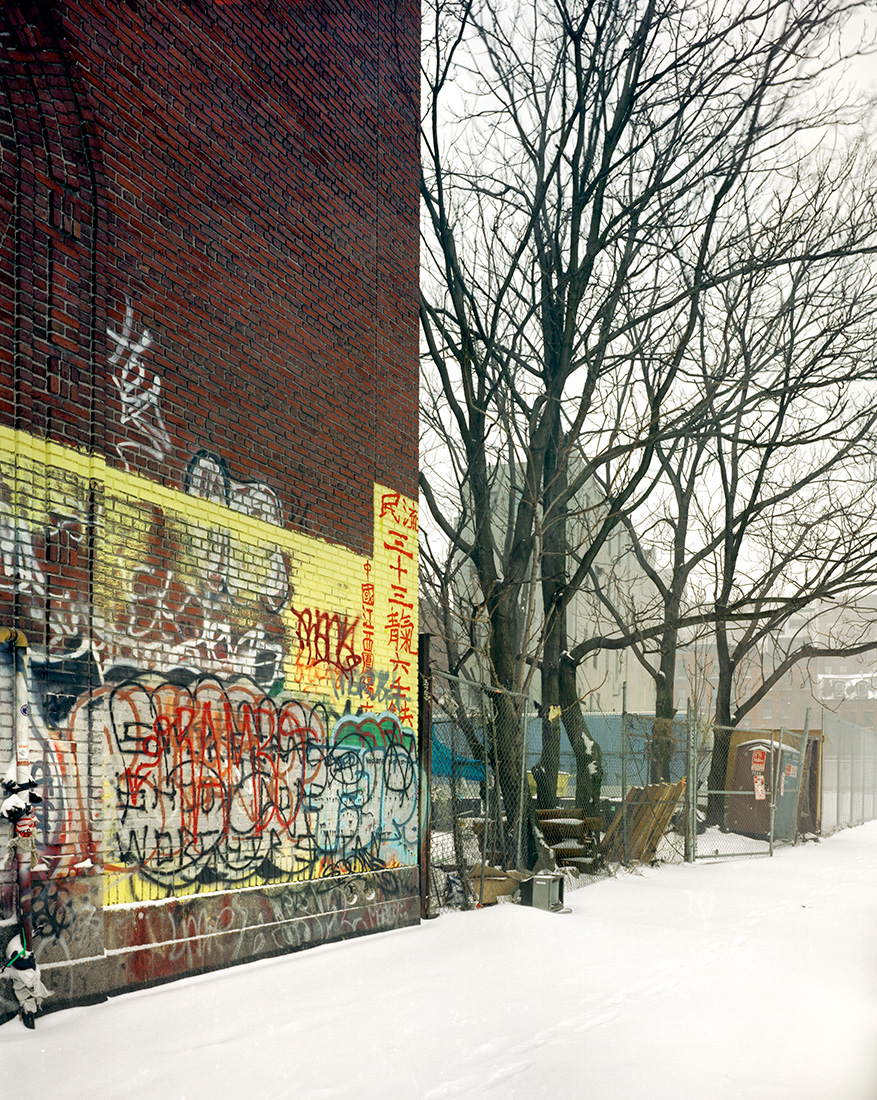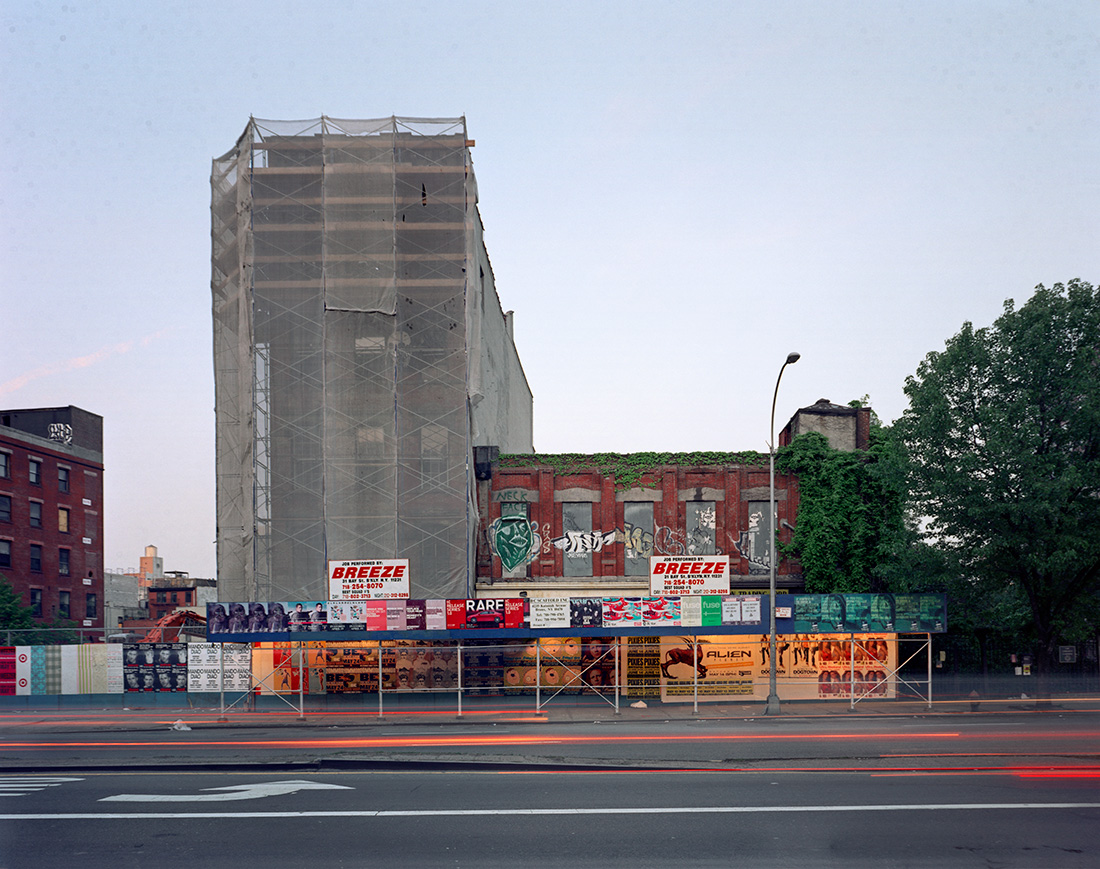
Former Mars Bar at East 1st Street and Second Avenue in 2006
Mars Bar was the quintessential dive bar, its passing mourned by many, including many who never stepped foot in the place. I went in once, and while I admired the exuberant state of decrepitude, glancing at the handful of desultory patrons, I knew that was not going to be my hangout. The bar itself hung on longer than one would have expected as the neighborhood around it gentrified. It was a city-owned urban renewal building, which, after decades of activist vs. city battles, eventually was urban renewed out of existence.

Mars Bar drawing by Tim Raymond, 2007
It should be noted that 25% of the new housing built there was subsidized, and the trade-off with the community resulted in the renovation of over 500 units of permanent low-income housing, mostly on nearby 3rd and 4th Streets. Other amenities included the protection of the Liz Christie Garden along Houston Street, the first community garden in the city.
But Mars Bar is long gone, a small symbolic piece of the once gloriously shambolic streetscape of the Lower East Side.

East 1st Street between Second Avenue and The Bowery, 2005

The Bowery and East 1st Street, 2005
295 Bowery, the site of the infamous McGurk’s Suicide Hall.
From The Bowery Boys website:
But the dance hall at 295 Bowery, the loathsome establishment owned by John McGurk, was not a place to admire. It was the worst of the worst, a dive where criminal activity thrived alongside bawdy can-can dancers and endless pours of putrid booze.
In early March of 1899, a woman named Bess Levery climbed to one of the top floors of McGurk’s — floors given over to illegal behavior — and killed herself by drinking carbolic acid. Within a week, two more women had ventured to McGurk’s, attempting the same dire deed.
By the end of 1899, the dance hall had received a truly grim reputation, and its proprietor, capitalizing on its reputation, began calling his joint McGurk’s Suicide Hall.